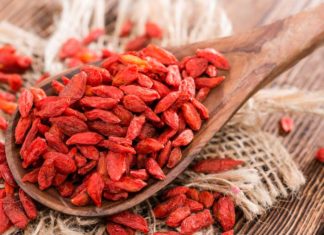
Sunscreen is a mystery to many of us. Do we need sunscreen? Is claim to organic sunscreen true? This is the main question we will explore to shed some light on this mystery.
The ozone layer is thinning in our sky. This is especially true for Australia and Antarctica this ozone depletion is especially harmful to us because the ozone is a protective layer that filters out a lot of the harmful UV ray that shines through from outer space. Since this layer is thining allow harmful UV ray come through our atmosphere. This is why Australian is one of the countries that have the highest rate of the skin cancer, hence protecting ourselves from this ray is essential. Sunscreen is our solution to safeguarding ourselves form some of this ray.
Why do you have to put sunscreen on?
Skin uses sunlight to produce the essential vitamin D needed for the body – a condition that is necessary for normal bones (lack of vitamin D in children is known to be the main cause of diseases associated with rickets). But not always the sun is beneficial. The epidermis (outer skin) consists of cells that contain melanin pigments; these pigments protect the skin from the ultraviolet rays of the sun.
If you have skin that is prone to sunburn, the feeling of itching in contact with sunlight means your skin is lacking melanin. Of course, people with whiter skin tend to have less melanin pigmentation, which in turn is less resistant to sunlight and more susceptible to sunburn.
Then, if the skin is not properly protected, it will lead to burned cells, over time the skin is reduced of elasticity, causing wrinkles, cracking and cause age-old effects. Also, UV rays in the sun can cause dermatitis, skin irritation and especially skin cancer.
Therefore, protecting the skin from the sun is the most important to do in Australia where the ozone layer is depleting.
First, let’s find out about the compound of UV rays
UVA: can get through the window, jacket, mask, etc., strong from sunrise to sunset. We do not completely feel the heat of this ray, but it has an unfathomable effect, in the long run, causes freckles, blackheads, breaks collagen, causes ageing.
UVB: we can feel the heat of this ray, the strongest heat is from 10 AM to 4 PM. It blistering, burning skin, causing red skin and peeling skin. If the sunburn occurs long and often, it will increase the risk of skin cancer by 50%.
UVC: extremely toxic, penetrating through when the ozone layer is punctured, this is the main cause of skin cancer. Currently, sunscreens can not protect the skin from this ray. It’s very dangerous for people who live in Australia.
Even when it’s cloudy, dark or rainy, UV rays still work from 20% to 60%
Each person has a different sensitivity to UV rays. People with white pigmentation are more vulnerable to sunburn than people with dark skin.
Sunscreen SPF and PA:
SPF: UVB protection index
1SPF = 5/8/10/15/20 minutes depending on the sun cream company
The SPF shows how long the skin is protected by the product. For example: SPF30, if 1SPF = 20 minutes then the sunscreen is effective in (30×20)=600 minutes = 10 hours. However, due to the sweat, wind, water, so we have to re-apply sunscreen every 3-4 hours to be effective.

SPF index in sunscreen products
PA: UVA protection index
The more the +, the higher the level of UVA protection, the highest UVA protection is PA++++.
According to what mentioned above, there are two types of sunscreen. Let’s take a look.
| Physical sunscreen | Chemical sunscreen | |
| Principle | Making a protective barrier that helps prevent, disperse and reflect UV rays, making it impossible to penetrate the skin. The cream is on the surface of the skin as a coat or a wall, capable of reflecting ultraviolet ray.
They work immediately after applied to the skin. |
It acts as a membrane for chemical filtration, by absorbing and permeating the UV rays into the skin, changing them to heat and releasing them from the skin before the UV rays can damage it.
You need to wait up to 30 minutes for the sunscreen start working. This type of sunscreen usually only protect against either UVA or UVB rays, not both of them. |
| Ingredients | Zinc oxide
Titanium dioxide |
Octinoxate
Avobenzone Oxybenzone Sulisobenzone Ect. |
| Advantage | Good for the skin, less irritating and stable in the sunlight | It penetrates rapidly into the skin |
| Disadvantage | By creating a protective layer, it will leave on your face a white cast or tint. For a long time, it will create a feeling of sebum or oiliness. Nowadays, with modern cosmetic technology, a new generation of sunscreen with microparticle composition has partially improved the above, the sunscreen now is only a thin, white membrane. | Unstable in the sunlight so after 2 hours you should reapply them to the skin. And you have to wait 15-20 minutes for the sunscreen to be absorbed to the skin before going out.
Some can cause allergic reactions. |
Sunscreen regulations in Australia
Organisations that have right to regulate sunscreen in Australia is the Therapeutic Goods Administration (TGA) and the National Industrial Chemicals Notification and Assesment Scheme (NICNAS). The main intention of TGA sunscreen is to prevent you from the sunlight, limit the numbers of cases of skin cancer. In the other hand, NICNAS control cosmetics sunscreen that has another purpose than sunburnt protection like tinted bases/foundation with SPF, sunbathing products with the sun protection for a secondary purpose or anti-bacterial, anti-acne skin products. All of the products have been tested for efficacy before they can be presented to consumers.
Australian Certified Organic Standards
According to Australian Certified Organic Standards, you must grow the ingredients for them to be organic. If it can not be grown from the ground, it is not considered organic. So you can’t find organic sunscreen in Australia.
An item that occurs naturally that we use in the cosmetic world is still not considered as organic under the Australian standard. These mining ingredients like minerals, clays, sea salts, chalks, charcoal, etc. are use regularly and potentially beneficial to you still can not be considered organic as they are not grown. Hence under Australia, Strict standard sunscreen cannot be considered organic.
The US National Sanitary Foundation (NSF) does allow to be certified at 70% organic, but the USDA is the same with Australia and will not certify this certificate for organic sunscreen.
Does organic sunscreen exist?
You will find it hard to have organic sunscreen. Rarely sunscreen, even the physical protection sunscreen, to get certified as organic because they always contain ingredients that can’t be grown. In physical sunscreen, there are two main ingredients are Zinc Oxide and Titanium Dioxide. When you applied sunscreen with those 2 ingredients it acts as a reflector of light like a mirror, they sit on top of the skin, reflecting and scattering UVA, UVB rays. They are effective at blocking the sun’s rays and are does not usually absorb into our skin. But these active ingredients can’t be organic because they do not fit the standard we have here, it cannot be grown. And because the amount of Zinc Oxide and Titanium Dioxide required for the sunscreen to work is much more than 5%, physical sunscreen manufacturers can’t reach the criteria of 95% organic ingredients to be certified.
What can you do if you don’t get organic sunscreen?
Under Australian Certified Organic Standards, these products like mentioned above can carry an “Australian Organic Allowed Input” or “Biological Farmers of Australia (BFA) Approved Product” label to indicate their suitability to use in organic systems and as products that do not contain synthetic and artificial ingredients.


The logos of Australian Organic Allowed Input and BFA Approved Products
Besides, you can take a look at natural ingredients that can be grown organically in the sunscreen.
These are top 10 types of essential oils that when used can help protect your skin from the harmful effects of sunlight. The list mentions the SPF, the higher the SPF, the more effective the sunscreen. But do not choose a sunscreen with too much SPF (beyond 60) because it can cause typical side effects such as pimple clogs and acne pimples.
Carrot seed oil (SPF 38-40)
Red raspberry seed oil (SPF 28-50)
Barley sprout (SPF20)
Avocado oil (SPF 4-15)
Coconut oil (SPF 2-8)
Olive oil (SPF2-8)
Macadamia oil (SPF 6)
Almond oil (SPF 5)
Shea butter (SPF 3-6)
Jojoba oil (SPF 4)
Make sure you have no side effects with these essential oils before use. Apply to a small area before applying to the entire body.
To get more information about organic products like organic sunscreen and more natural skin care products, please visit our website at http://naturalorganliving.com.au/. Thanks for your reading.











